
|
|
|
 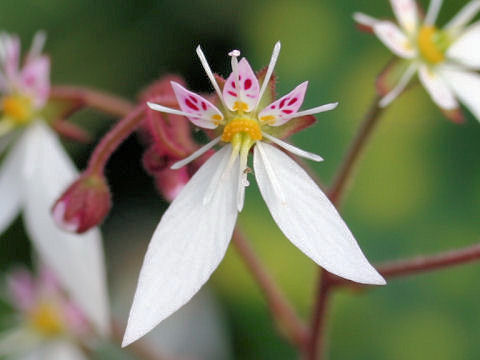 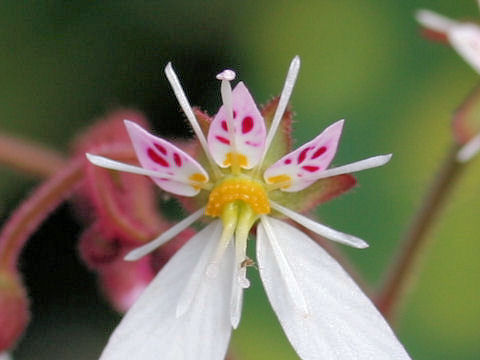 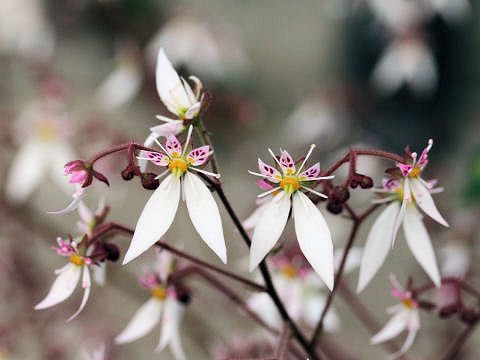 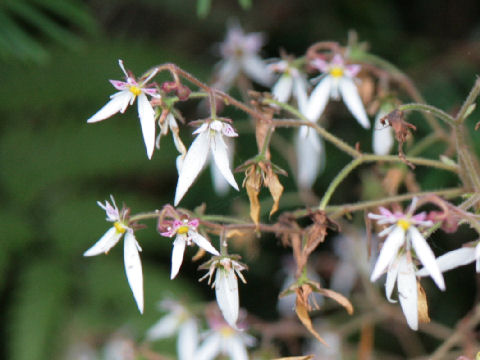 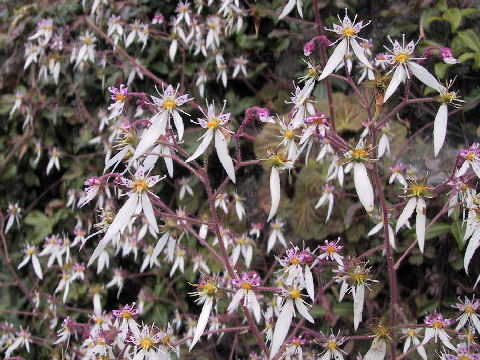  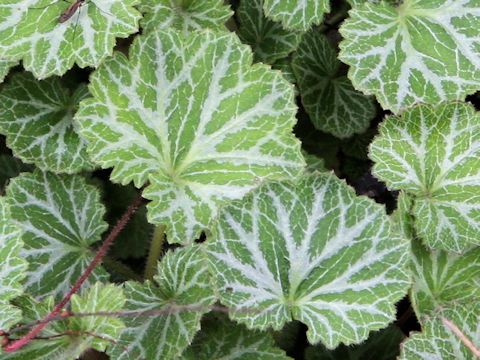   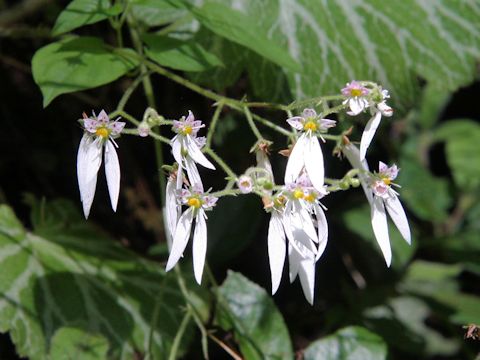 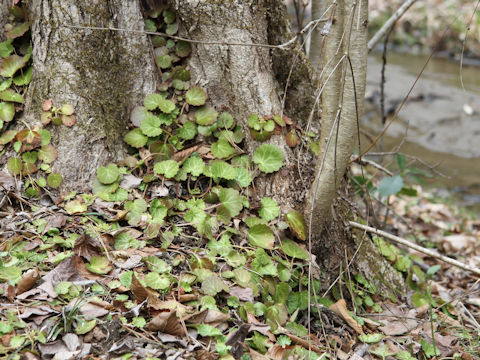 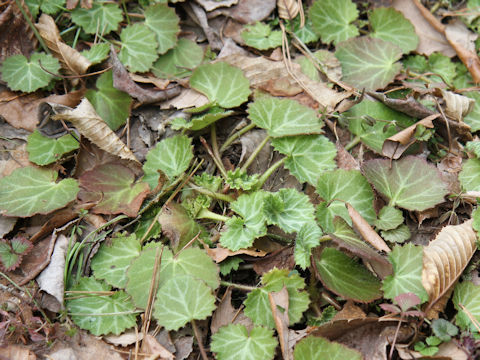 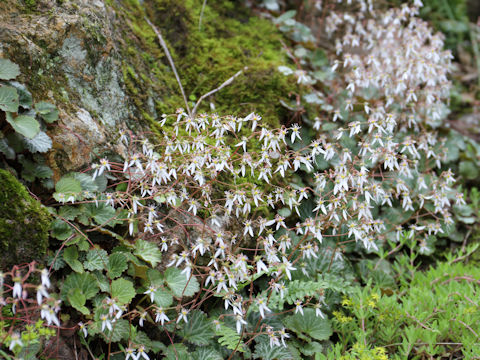 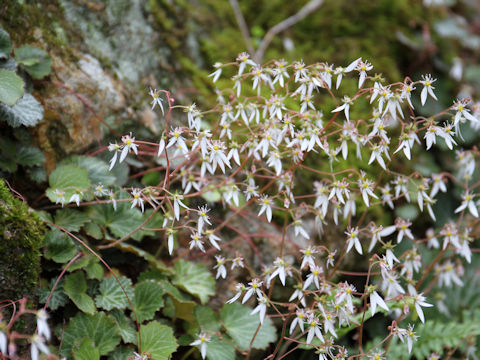 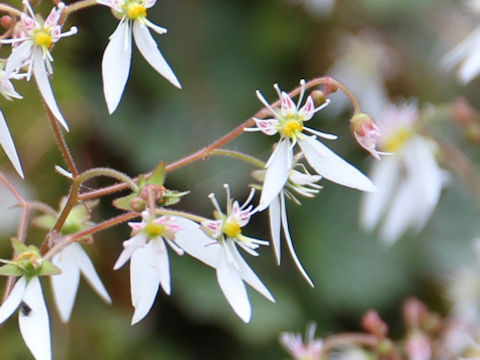 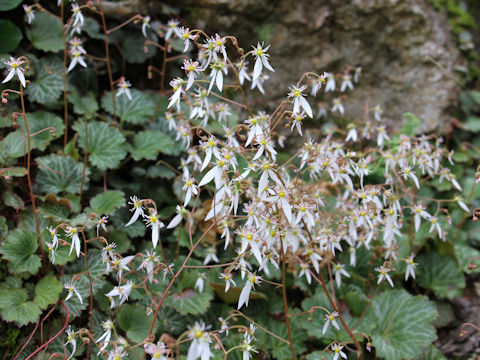 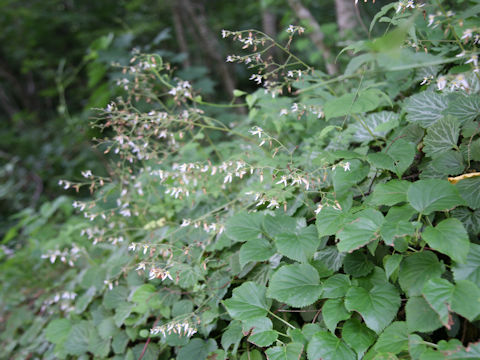 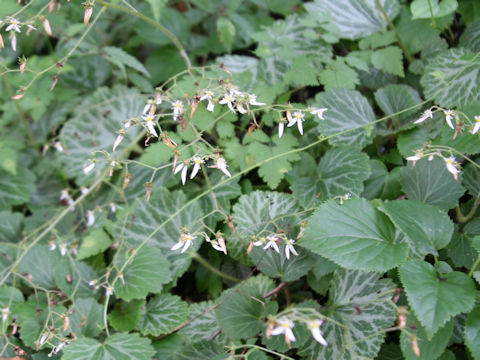 |
|
|
|
わが国の本州から四国・九州、それに朝鮮半島や中国に分布しています。日当たりのあまりよくないところに生え、高さは20〜50センチになります。葉は腎円形で根生し、葉脈に沿って白い斑が入ります。裏面は暗紫色を帯びます。5月から6月ごろ、花茎を伸ばして円錐花序をだし、白い花を咲かせます。花弁のうち下の2個が白くて大きく、上の3個は薄紅色で濃い赤紫色と黄色の斑点があります。根もとから走出枝をだして広がります。葉はてんぷらにして食べることができ、火傷などにも効きます。中国語では「虎耳草(hu er cao)」と呼ばれます。 |
|
|
ユキノシタ科ユキノシタ属の常緑多年草で、学名は Saxifraga stolonifera。英名は Strawberry saxifrage。 |
|
|
The Strawberry saxifrage (Saxifraga stolonifera) belongs to Saxifragaceae (the Saxifrage family). It is an evergreen perennial herb that is distributed from Honshu to Shikoku, Kyushu inf Japan, as well as the Korean Peninsula and China. This herb grows in unsunny places and can reach 20-50 cm in height. The leaves are reniform-round and basal with white mottles along the veins. The abaxial side of leaf is tinged dark purple. The panicles are borne on the flowering stalks and the white flowers bloom from May to June. The underneath two petals are white large, and the upper three petals are pale rose pink with dark magenta and yellow mottles. The plant spreads by basal stolons. The leaves can be eaten as tempura and are also useful for treating burns. In Chinese, it is called "虎耳草" (hu er cao). |
|
|
[上] 茨城県神栖市土合西にて、2008年06月09日撮影。 [中1〜中3] 大阪府四條畷市清滝中町にて、2006年05月21日撮影。 [中4] 岐阜県白川村荻町「白川郷」にて、2006年07月12日撮影。(photo by Jon Suehiro) [中5] 愛知県新城市下吉田「阿寺渓谷」にて、2001年05月26日撮影。 [中6・中7] 千葉県香取市長岡にて、2012年04月20日撮影。 [中8・中9] 福島県磐梯町「おおるり公園」にて、2012年06月22日撮影。 [中10] 三重県松阪市飯高町「波瀬植物園」にて、2012年07月09日撮影。 [中11・中12] 宮城県利府町「宮城県県民の森」にて、2015年02月07日撮影。 [中13〜中16] 山形県小国町小玉川にて、2019年07月03日撮影。 [中17・下] 宮城県白石市「材木岩公園」にて、2023年07月10日撮影。 |

|
|
Shu Suehiro |